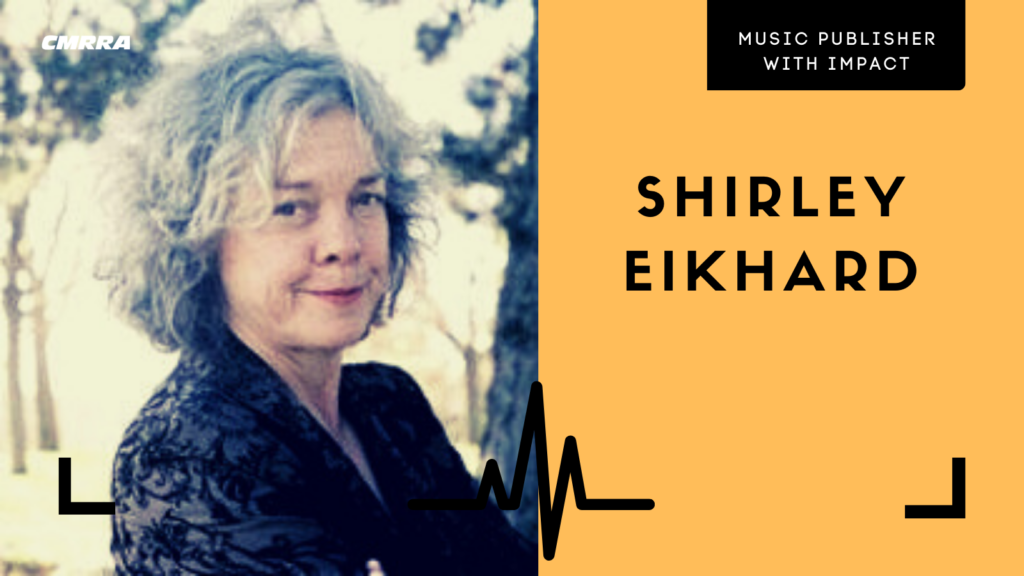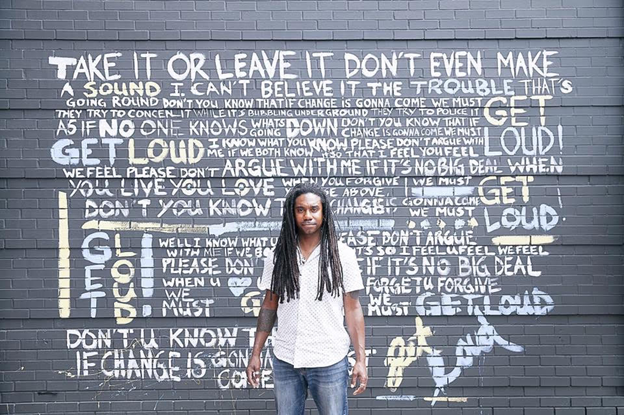Industry veterans Shirley Eikhard and Julian Taylor discover a long and rewarding path to success
[Editorial note: CMRRA’s clients include music publishers who help guide and add tangible trusted value to songwriter careers as well as self-published songwriters who do the work directly. This month’s feature focuses on two stories from our self-published clients whose success with their songwriting have impacted their careers in different ways.]
by Jon Dekel

In 1991, Shirley Eikhard got a phone call that would change her life forever. Entering her home in Harrison, Ontario, Eikhard checked her answering machine messages and heard a very surprising voice. On the line was the singer and guitarist Bonnie Raitt, who had just won the Grammy award for Album of the Year. As surprising as that was, as Raitt spoke, Eikhard heard a familiar tune in the background. Once she clued in to what was happening, she could hardly believe her ears.
Raitt had recorded her song, “Something To Talk About.” She said, ‘I hope somebody else has not cut this song, because we’ve just cut it and we’re gonna release it.’” Eikhard recalls, the sense of disbelief still audible in her voice.
Unbeknownst to the Canadian songwriter, Raitt had discovered the track after Bruce Springsteen suggested she add a single to her upcoming album and a mutual friend had passed along a demo Eikhard recorded in 1984. “I had always adored Bonnie. To have her record the song was like gold to me,” she says. “I knew she was going to sing the crap out of it.” Raitt’s version of “Something To Talk About” went on to win her another Grammy and the song has since achieved pop culture ubiquity: covered by everyone from Britney Spears to Will Farrell, and even serving as inspiration for the 1995 Julia Roberts film of the same name.
Today, Eikhard, a Juno-winning songwriter and recent Canadian Songwriting Hall of Fame inductee who has written for the likes of Emmylou Harris and Cher, says it’s still by far her most impactful song. “Here we are, 30 years later, and I still make a really nice living from it every year!” To understand just how impactful, though, it’s important to understand Eikhard’s history. To hear her tell it, until that point, her story could have been a cautionary tale.
A songwriter since she was 11, at 15 she performed her song, “It Takes Time” on the CBC television program, Singalong Jubilee. As it happened, a fellow performer by the name of Anne Murray took a shine to the tune and recorded it as the opening song on her fourth album, 1971’s “Straight, Clean and Simple.” When Murray’s publishing company discovered the song’s author was a fresh-faced teen from the Maritimes, they immediately called her in for a meeting. “I didn’t understand anything about publishing, all I knew was I wrote a song,” Eikhard recalls. With Murray’s version already on the album, Eikhard should have had the upper hand heading into the meeting. But the teen arrived with her father, an amateur musician, as her representation. “I looked at my dad when we were sitting in the office with the publishing people, and I said, ‘Don’t you think you should talk to a lawyer?’ and he says, ‘quiet, you’ll blow the deal!’,” she recalls. “Technically, we could have just stood our ground but instead they signed me to a seven-year exclusive deal and there was no advance.”
It would take another two decades, following co-publishing deals with Warner Brothers and Attic Records, after she keenly studied the publishing industry under the tutelage of the legendary Alexander Mair, for Eikhard to feel confident enough to go independent as a full-time songwriter.
Working as her own music publisher, she went to Nashville where a friend set her up with a songwriting circle. It was there she penned “Something To Talk About.”
“I can tell you the exact date: February 3, 1984. I wrote it in 20 minutes like ‘boom!’” she says. “The next morning, I get up and listened to it, looked in the mirror and I went, ‘Shirley, you’ve written a hit song!”
By the turn of the decade, however, Eikhard had given up on her Nashville dreams. Despite her self-assuredness, “Something To Talk About” had been held and dropped by several artists — including Murray, who would name her 1986 album after the track but never record it. By 1991, she had all but quit songwriting, taking on small gigs and extra work on films in order to make ends meet. All of which made Raitt’s call a true revelation.
“It was almost like it was meant to be,” she says in reflection. “We were just right [for each other] at the right point in our lives.”
Toronto-based singer-songwriter Julian Taylor signed his first publishing deal over two decades ago when his group, Staggered Crossing, were discovered by The Music Publisher’s (TMP) Frank Davies. “His daughter went to my high school. She got a hold of our demo and gave it to her dad,” Taylor recalls. “Classic music industry story.”

Unlike the teenage Eikhard, Taylor had been a keen student of the machinations of the industry and insisted on a co-publishing deal with Davies. A move that paid off when the group’s debut single for Warner Brothers, 2001’s “Further Again,” reached #7 on the Canadian rock charts. “And from there it got rather interesting,” Taylor laughs, referring to TMP’s merger into Allan Gregg’s Song Corporation, which quickly went belly up.
In the wake of the bankruptcy, the band worked with lawyer Peter Steinmetz to successfully argue in court that artists should be able to retain the rights to any unreleased assets, including publishing. “We helped amend Canadian Bankruptcy Law Section 13 of the Copyright Act, which in the long run has helped many other artists,” Taylor boasts. “It’s one of the things I’m most proud of.” In the fallout of the Song Corporation, Taylor created his own independent label and went the self-publishing route “out of necessity.”
Following Staggered Crossing’s disbandment in 2007, he formed the Julian Taylor Band and it was in that mold that he says he found his own unique voice. Asked which of his songs he considers the most impactful, Taylor expectedly nods to his most well-known song “Further Again,” but says he’s found two recent works to be considerably more rewarding. Each for its own personal reason.
In 2015, inspired by the riots in Ferguson, Missouri which were precipitated by the shooting of Michael Brown Jr., a Black man, by Darren Wilson, a white police officer, Taylor released “Get Loud, Part 2.”
“That particular song was interesting to me because it created a really cultural movement with my material,” Taylor, who is of Black Canadian and Mohawk ancestry, explains. “That was one of the first times when people were like, ‘Wow, this is actually political, and personal.’” For the song’s video, Taylor painted a mural in Toronto’s east end. He says it’s a point of pride that the mural not only still exists but has become a landmark for the community, with many stopping to take pictures in front of “Get Loud’s poignant lyrics.
From a publishing perspective, Taylor points to “The Ridge,” his 2020 solo single which recently earned him his first two Juno nominations. “It’s the first time in my career I didn’t split the publishing,” he explains of the song’s impact on his personal outlook. “It’s like, ‘Holy smokes, there’s a lot more to it than I thought.”
“Sometimes it takes 20 years to figure that out.”
#withIMPACT Music Publishers are the heart of our industry. In 2021, we’re highlighting eleven Music Publishers with impact. We’re also discussing songs. We acknowledge that there is not one measure that quantifies a song’s success, so, we’re discussing all the ways we can think of qualifies as impact – songs that started revolutions, launched movements, were the catalyst for change, started love stories or just plain inspired.
Thinking about becoming a client of CMRRA? Already a client but you have questions? Email us at [email protected] and we’ll get you the answers you need.


